Technically, it's been fall for a good
chunk of time, but it really doesn't feel like fall to me until a few
very significant and absolutely necessary events occur:
1. Trader Joe's stocks their shelves
with pumpkin goods and apple cider.
2. Bits of dry, colored leaves start
appearing in my hair brush.
3. I begin dreaming up my Halloween
costume, even if I have no Halloween plans.
For me, making costumes is the best
part of Halloween. There's something satisfying about that frantic,
last minute, run-out-of-the-house-while-gluing-sequins-to-your-top
feeling. Maybe that's just me. Regardless, homemade costumes are the
best! They're fun to make (and less stressful if you start early...),
you can show people your creativity, and they're completely original
and customizable.
You may have seen some pictures
floating around the internet that show that wheelchairs can be the
best accessory for Halloween costumes. These are some of my
favorites:
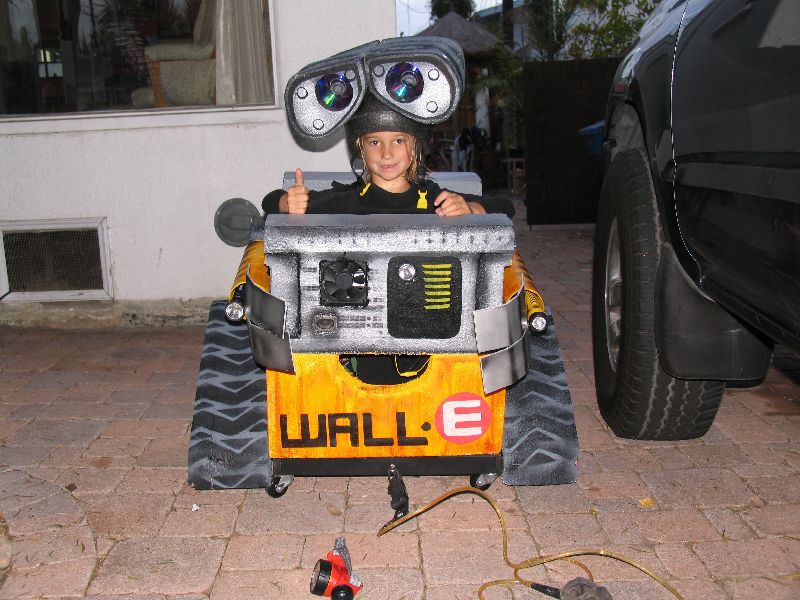 |
| A very elaborate Wall-E |
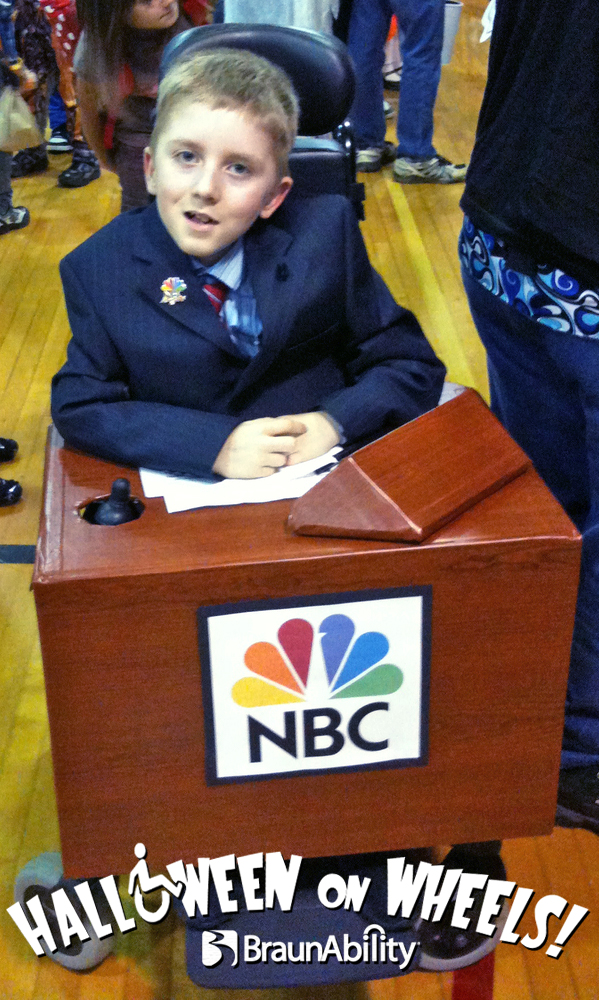 |
| For the sharp dresser |
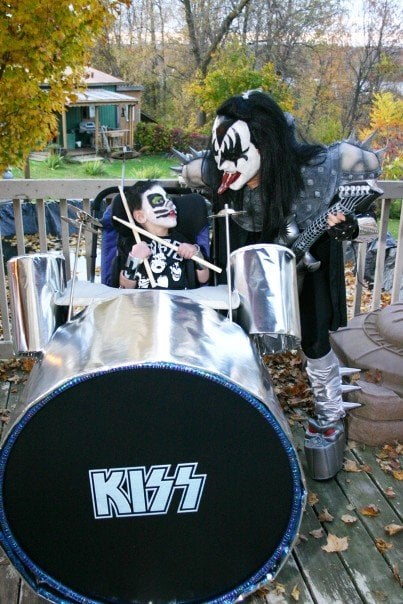 |
| Great group costume idea |
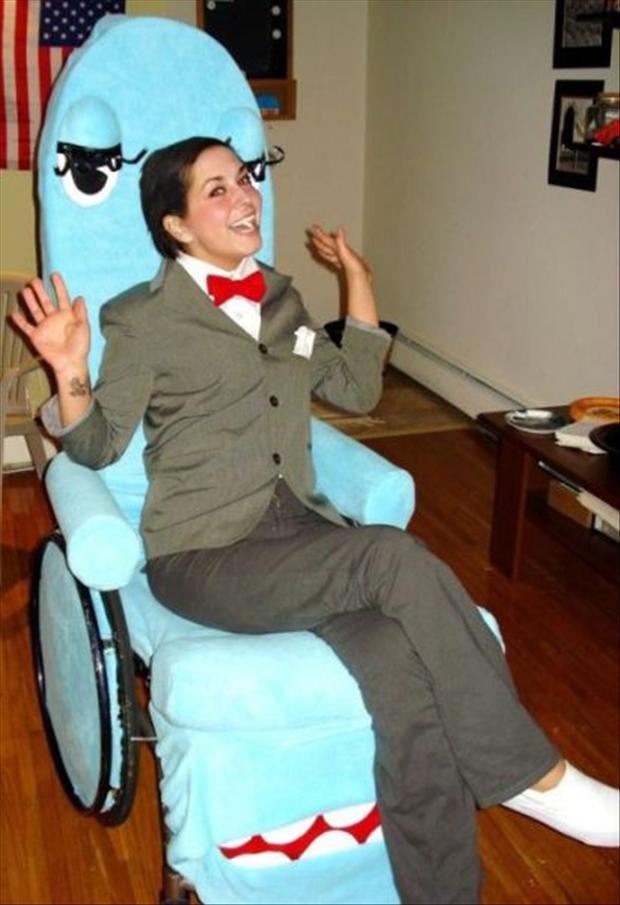 |
| PeeWee Herman and the Puppet Chair |
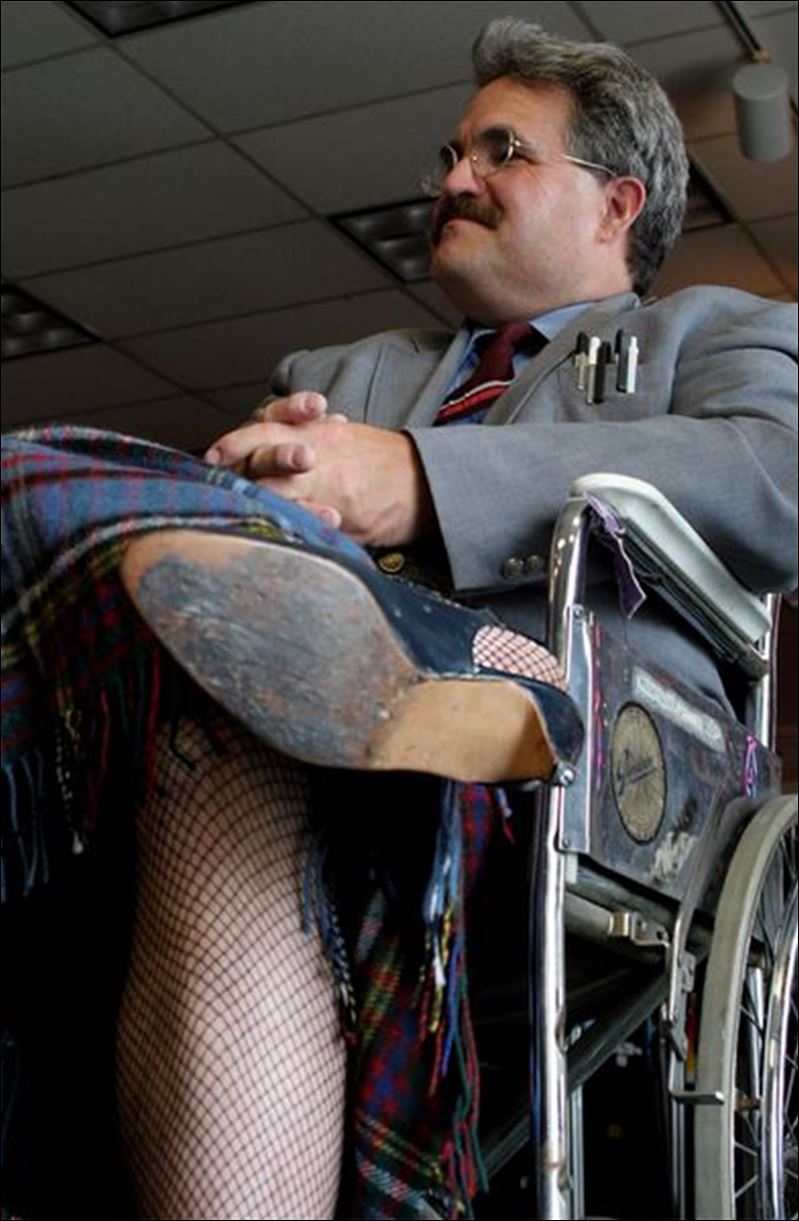 |
| My personal favorite: Dr. Scott from Rocky Horror Picture Show! This one is great if you're pressed for time or resources. |
Making a costume like these can be time
consuming, so it's important to keep a few things in mind so you
don't end up spending hours creating an elaborate costume that is
ultimately nonfunctional.
First, like any costume, make sure it's
safe. A parade float-style costume looks nice and is fun until paper
bits or string get all caught up in wheels. Blood may give a costume
a nice touch, but let's make sure it's fake blood.
Equally important is making sure the
costume fits through a standard door. Some costumes will add bulk to
a chair, so keep in mind the old saying: Measure twice, cut once.
There is little more disappointing on Halloween than making something
lovely only to have to deconstruct it. (On that note, a tip from my
personal experience: When making a mask that covers your nose, make
sure you leave room inside for your own nose before you take the time
shape, dry, and paint the mask.) So plan ahead! It will save you a
lot of frustration and grief.
This last one will be more important
for some than others. Don't skimp out on glue, tape, thread, velcro,
or whatever sort of fastener you use, and take some with you when you
go about your festivities. My Halloween wouldn't be complete without
a pocket full of safety pins and a bottle of fabric glue tucked
discreetly away. Of course, some of you are likely better at planning
and using your costuming time wisely, but homemade costumes do have
their oopses (especially when paper and unpredictable autumn elements
are involved). Extra backup never hurts!
I just have to throw this out there as
a little post-thought. If you're thinking about dressing up a service
animal, make sure you give your friend time to get accustomed to his costume so he isn't distracted by a silly hat when he should be focused on his job.
I hope this has inspired you to make
some awesome costumes this week, or at least gotten you excited about
Halloween or fall. Want some more detailed costume guidance? The Bridge School has instructions.
What are your costume ideas? I haven't seen or read the series, but I think it would be rad to see a Game of Thrones costume. I'm imagining a wheeled version of the Iron Throne. Yes? No?
We'd love
to see your Halloween photos on our Facebook page! Also, remember to
have fun and be safe. :)






